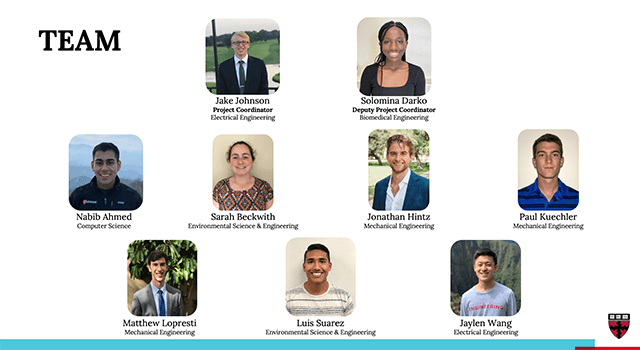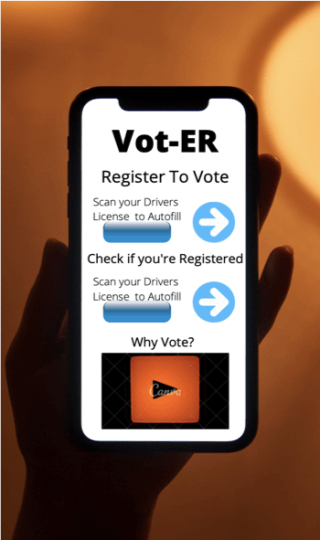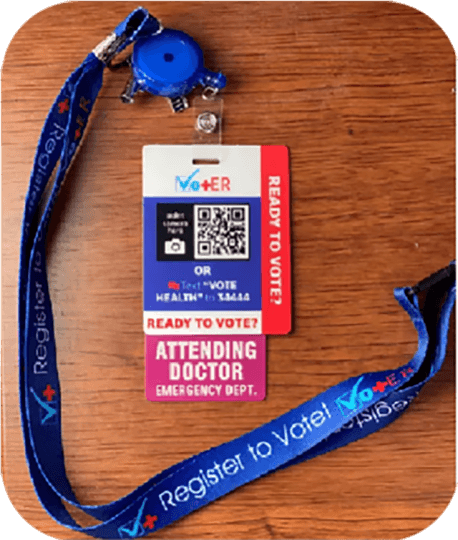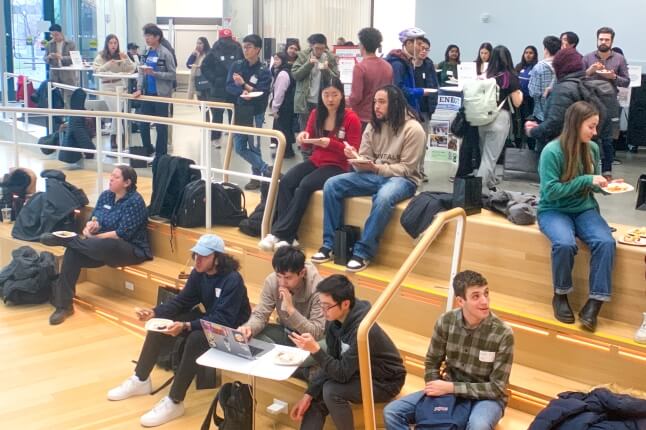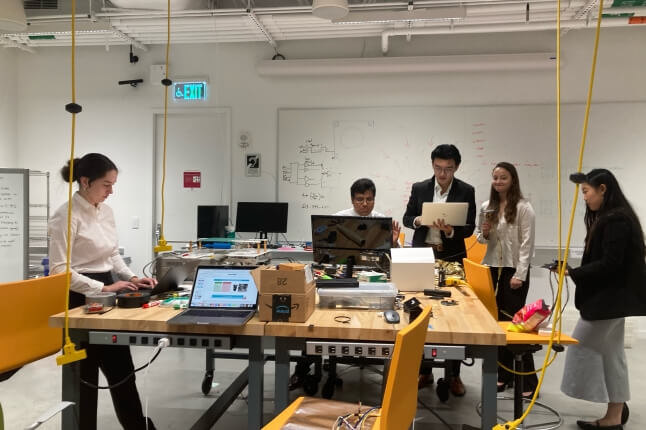News
These students focused their semester project on enhancing the Vot-ER platform to increase civic engagement among underrepresented patients.
In the U.S., young adults, people of color, and low-income individuals are more likely to lack access to adequate health care. At the same time, these groups often face barriers to participate in elections -- and the ability to vote for candidates who pledge to fight health care disparities.
Vot-ER is a nonprofit that seeks to make it easier for patients, particularly those from marginalized communities, to participate in the democratic process. Students in the Harvard John A. Paulson School of Engineering and Applied Sciences course “Engineering Problem Solving and Design Project” (ES 96) focused their semester project on enhancing the nonprofit’s platform to increase civic engagement among underrepresented patients.
Currently, Vot-ER provides lanyards for health care providers that display a QR code. Patients scan the code to visit a website that walks them through the process of registering to vote or requesting an absentee ballot.
The students investigated family medicine clinics, emergency departments, and vaccination sites to determine how Vot-ER could more effectively engage patients. After studying the challenges faced by both providers and patients, they developed five solutions to improve the effectiveness of Vot-ER resources: updated landing pages, autofill integration, waiting room displays, augmented and virtual reality engagement, and band-aid messaging.
“We settled on our final solutions after converging our long list of ideas by using five weighted categories: do we reach our target population stated in our problem statement, is it connected to or feasible within the healthcare arena, the difficulty of implementation for our client, the overall benefit of the solution, and finally the ES 96 implementation time,” said Sarah Beckwith, S.B. ’22, an engineering sciences concentrator. “The biggest challenge we had while first ideating solutions to our problem statement was developing ones that were HIPAA-compliant since we were working within the health care arena.”
This mock-up shows the auto-fill feature the students designed for the Vot-ER platform.
The team proposed a redesign of the Vot-ER landing page that specifically targets each user and includes a countdown to their next local election. They also added a feature that lets a user upload a photograph of a driver’s license, passport or other form of identification to autofill parts of the online voter registration forms.
They developed content for waiting room screens that includes interactive elements like election countdowns and voter registration quizzes. To create a more immersive experience, the students explored the use of augmented reality (AR) to show how voting leads to improved health care. They devised an AR game in which the user is presented with an overloaded hospital and sees how passing a referendum could lead to increased hospital capacity.
“We realized that many people when directed to a simple landing page or website would click away, especially if it just tells them to register to vote, since they would get bored or lack any kind of motivation,” said Jaylen Wang, S.B. ’22, an electrical engineering and computer science concentrator. “AR is a special tool in that it can place scenarios that users are unlikely to see in the real world directly in the user's environment, making things more concrete. For us, we looked to make more concrete the connection of voting to the healthcare that a voter receives.”
And to reach even more patients, the students proposed a band-aid messaging campaign—they designed band-aids that highlight the importance of voting and include Vot-ER QR codes.
Project Coordinator Solomina Darko was proud of what she and her peers were able to accomplish over the course of the semester.
“Our solutions not only expand the reach of their platform, but they make it easier and more interesting for people to easily and continually engage beyond an initial interaction,” said Darko, S.B. ’22, a biomedical engineering concentrator. “Our solutions also put an emphasis on finding new ways to motivate people who interact with Vot-ER to be civically engaged.”
Claire Dowell, a member of the Vot-ER team, was grateful for the work the students did and impressed by their novel ideas.
"I joined the Vot-ER team near the end of the team’s ES 96 project, and I was blown away by what they created. Their thoughtful innovation impressed every member of our team. We found the band aid designs eye-catching and a practical solution to our problem,” said Dowell. “After watching the presentation, I was so grateful to have worked with a team that looked at our issues in such an in-depth way. We are moving forward with developing their designs, and I could not be more excited to see the final product."
Despite the difficulties of collaborating during a remote semester, the students rose to meet the challenges they faced, said instructor Nabil Harfoush, Visiting Associate Professor in Engineering Sciences.
“Teaching ES 96 is all about equipping our students with methods to engage with human-based complex challenges, where a technical solution is insufficient,” he said. “It is a bonus to have Vot-ER say that they learned as much from the students process as from the solutions they developed. It illustrates our impact beyond the classroom.”
Topics: Academics
Cutting-edge science delivered direct to your inbox.
Join the Harvard SEAS mailing list.
Press Contact
Adam Zewe | 617-496-5878 | azewe@seas.harvard.edu
